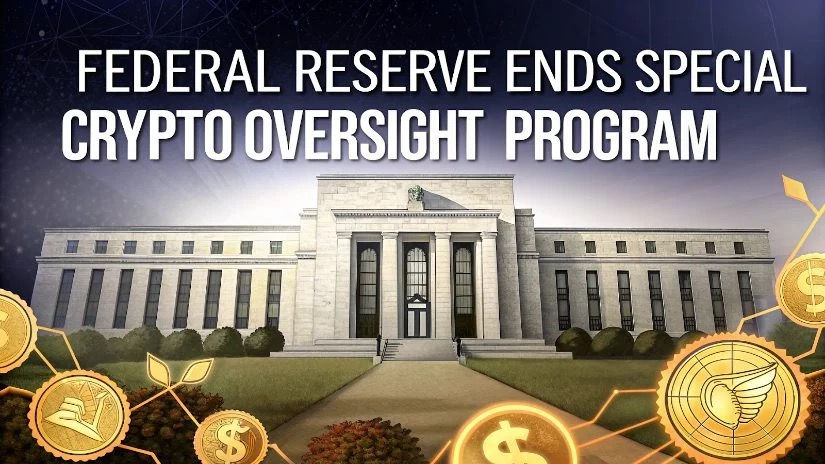The Banking Lobby’s Last Stand: Can It Reshape the GENIUS Act to Save Traditional Finance?
- Gator

- 10 hours ago
- 5 min read

Introduction
In the heart of Washington’s financial corridors, a battle is brewing that could redefine the future of money. The Banking Policy Institute (BPI), led by titans like JPMorgan’s Jamie Dimon, is sounding the alarm over the Guiding and Establishing National Innovation for U.S. Stablecoins (GENIUS) Act, signed into law on July 18, 2025. This landmark legislation, designed to cement stablecoins as a pillar of the U.S. economy, has sparked a fierce backlash from banks fearing a $6.6 trillion exodus of deposits to yield-bearing digital assets. The BPI’s August 2025 letter to Congress demands amendments to close a perceived loophole allowing stablecoin issuers to offer interest through affiliates, a move they claim threatens credit markets and small businesses. As the Treasury seeks public input by October 17, 2025, and the crypto industry celebrates a regulatory win, the question looms: Is the banking lobby fighting a losing battle against an unstoppable stablecoin surge, or can it salvage traditional finance’s dominance?
The GENIUS Act: A New Era for Stablecoins
The GENIUS Act, passed with bipartisan support (68–30 in the Senate, 308 votes in the House), is a watershed for crypto. Sponsored by Senators Bill Hagerty, Tim Scott, Cynthia Lummis, and Kirsten Gillibrand, it establishes a federal framework for stablecoin issuers, mandating 1:1 reserve backing with U.S. dollars or Treasury bills, rigorous Anti-Money Laundering (AML) and Know Your Customer (KYC) compliance, and monthly transparency reports for issuers like Circle (USDC) and Ripple (RLUSD). Smaller issuers under $10 billion can operate under state laws, while larger ones face oversight from the Federal Reserve and the Office of the Comptroller of the Currency (OCC). The law, effective January 2027 or 120 days after final regulations, aims to bolster dollar dominance, with Treasury Secretary Scott Bessent calling it “essential” for U.S. financial leadership. By legitimizing stablecoins for payments and settlements, it’s poised to grow the $200 billion market to $2 trillion by 2028, rivaling traditional banking’s reach.
The Banking Lobby’s Case: A $6.6 Trillion Threat
The BPI’s campaign hinges on a single fear: stablecoins could siphon deposits, crippling banks’ ability to lend. In its August 12 letter, the BPI warned that a loophole in Section 4(a)(11), which bans issuers from paying interest directly but allows affiliates like exchanges to offer yields, could trigger $6.6 trillion in deposit outflows, per a Treasury report. Banks rely on deposits to fund loans, creating 70% of the U.S. money supply. A shift to stablecoins, which offer higher yields (e.g., 5–10% versus banks’ 0.5–2%), could raise lending costs, reduce credit for businesses, and hike interest rates for consumers, the BPI argues. Policy attorney Andrew Rossow underscores the risk of “shadow banks”—unregulated stablecoin issuers mimicking bank functions without oversight, threatening financial stability. The BPI’s push, backed by JPMorgan and Bank of America, seeks to tighten this loophole, aligning stablecoins with banking’s stringent rules.
The Crypto Counterargument: A Future Unstoppable
Crypto advocates see the BPI’s efforts as a desperate bid to cling to power. Circle’s Dante Disparte calls the GENIUS Act’s “Libra clause” a safeguard, forcing tech giants and banks to launch stablecoins via standalone entities with no leverage or lending, ensuring consumer protection. Jake Chervinsky of Variant argues the law already accounts for banking concerns, making amendments unlikely: “The bank lobby is tilting at windmills here.” The crypto industry’s lobbying muscle, with $265 million spent in 2024 to elect pro-crypto candidates, has shifted the tide, as seen in the defeat of crypto skeptic Sherrod Brown. Coinbase CEO Brian Armstrong champions interest-bearing stablecoins as empowering users, dismissing solvency fears as overstated given 1:1 reserve mandates. Analysts like Fabian Dori of Sygnum Bank argue the Act aligns with global frameworks like the EU’s MiCA, fostering innovation in payment-focused stablecoins while curbing risky yields.
Critical Challenges: Regulatory Gaps and Unintended Consequences
The BPI’s push exposes deeper tensions:
Loophole Reality: The alleged loophole—affiliates offering yields—may be overstated. The GENIUS Act’s ban on issuer-paid interest is clear, but exchanges like Coinbase could skirt this via separate agreements, as Aaron Brogan notes. Yet, closing this could stifle stablecoin adoption, driving users to DeFi platforms or foreign issuers, per Will Beeson of Uniform Labs, who predicts a $26 billion tokenized asset surge. The article’s alarmist tone downplays how existing AML/KYC rules already limit shadow banking risks.
Financial Stability: The BPI’s $6.6 trillion outflow estimate assumes a worst-case shift, but stablecoins’ $200 billion market is a fraction of $17 trillion in U.S. deposits. The article exaggerates the immediate threat, ignoring gradual adoption trends. Still, a stress event, like a stablecoin depeg (e.g., Terra’s 2022 collapse), could amplify risks, a point Rossow raises but the article underplays.
Regulatory Fragmentation: The Act’s dual federal-state framework creates complexity. Smaller issuers need state licenses, while larger ones face Fed/OCC scrutiny, potentially favoring giants like Circle over smaller players, per Logan Payne. The article sidesteps how this could consolidate the market, reducing competition.
Innovation Trade-Offs: The BPI’s push risks choking innovation. The Act’s clarity has spurred integrations like Western Union’s stablecoin trials and JPMorgan’s JPMD filing, but stricter rules could push firms to jurisdictions like Singapore, as seen with Polygon’s 2024 exit. The article’s focus on banking fears ignores this global race.
Political Dynamics: The BPI’s influence, while strong, faces a crypto lobby emboldened by Trump’s support and $197 million in PAC spending. Senator Elizabeth Warren’s failed amendments to limit issuance to banks show crypto’s sway, yet her warnings about Trump’s crypto ties highlight conflict-of-interest risks, which the article glosses over.
The Broader Context: A Financial System in Flux
The GENIUS Act’s passage, alongside the CLARITY Act’s Senate review, signals a U.S. pivot toward crypto integration, contrasting with Asia’s crackdowns and the EU’s MiCA rigor. Bitcoin’s $115,000 dip and Ethereum’s $3.8 billion unstaking queue, discussed previously, reflect market volatility, but stablecoins’ stability makes them a focal point. The Crypto Fear & Greed Index at 71 (“Greed”) signals speculative fervor, amplifying the stakes. The Act’s ban on yield-bearing stablecoins could redirect capital to tokenized real-world assets (RWAs), per Beeson, potentially reshaping DeFi. Meanwhile, the Fed’s proposal to allow staff crypto holdings and Wellgistics’ XRP pharmacy payments underscore crypto’s mainstream push, but macro risks like NATO-Russia tensions could dent sentiment, as seen in July’s 8% BTC drop.
Conclusion: A Clash of Titans with Lasting Stakes
The BPI’s fight to amend the GENIUS Act is a high-stakes gambit to protect banking’s turf against stablecoins’ rise. While their concerns about deposit flight and shadow banking carry weight, the crypto industry’s momentum—bolstered by robust lobbying and bipartisan support—suggests amendments are a long shot. The Act’s framework, balancing innovation with oversight, positions stablecoins as a dollar-strengthening force, but loopholes and regulatory gaps risk unintended consequences. As the Treasury’s October 17 deadline nears, stakeholders must engage to refine this landmark law, ensuring it fosters competition without destabilizing credit markets. For investors and businesses, the stablecoin surge is inevitable, but its shape—freewheeling or tightly controlled—hangs in the balance.





Comments